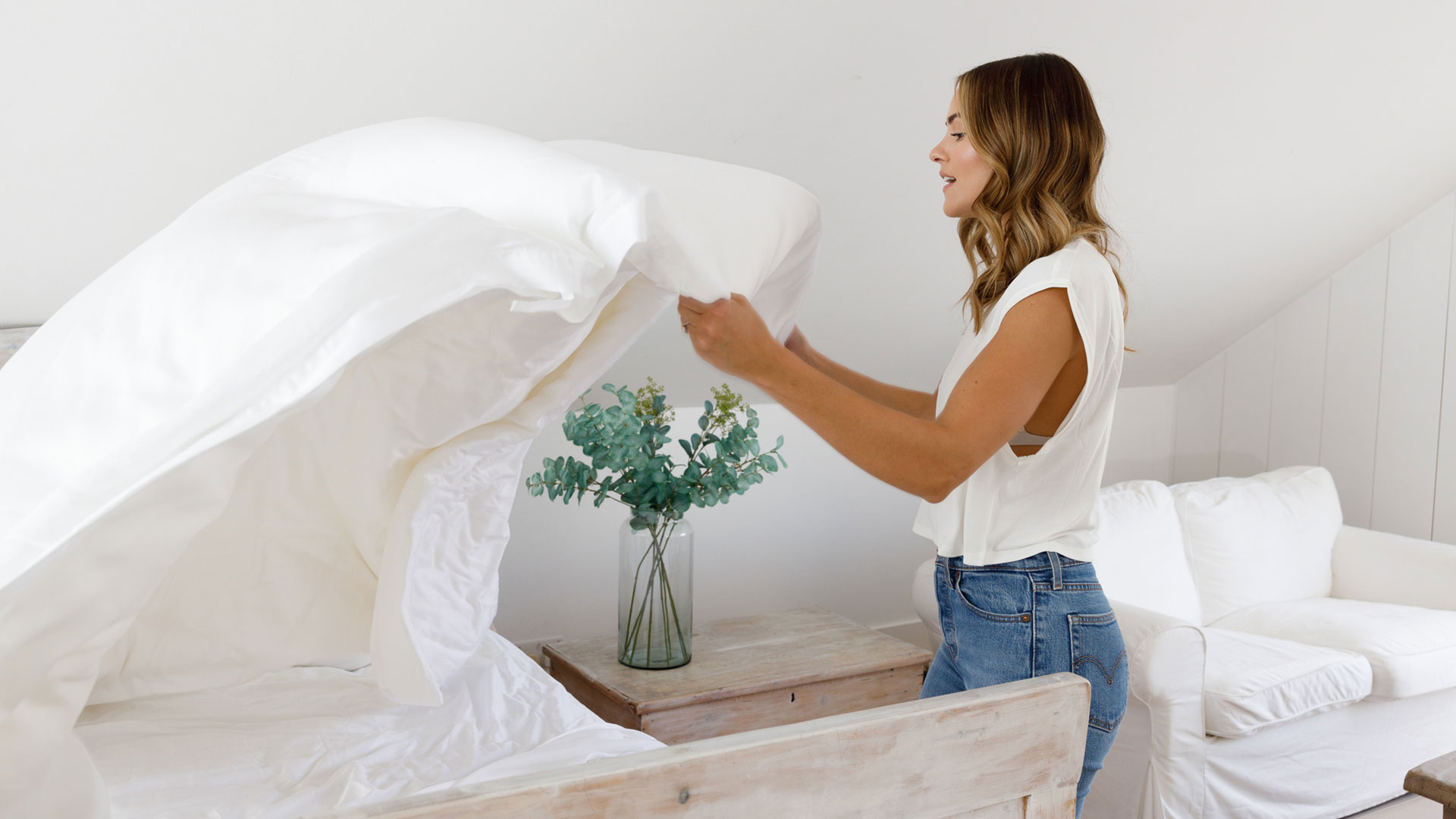How to dry your bedding indoors (without a tumble dryer)
Can't put your bedding out on the line? Follow these 5 top tips for getting them dried indoors

It's the worst time of the year for anyone who appreciates lovely, crisp, line-dried bedding. If you manage to dry your washing outside for most of the year and don't have a tumble dryer (or if you do have a tumble dryer but can't bear the escalating expense of running it right now), how are you supposed to dry your bedding naturally at the moment?
Bed sheets and duvet covers have a lot of surface area, making them hard to hang on a clothes horse, and if they're not dried properly they can go moldy. There's no point in having the best mattress, best duvet and best pillows if they're encased in damp, musty bedding, so what's the best way to dry it without a tumble dryer?
Step forward James Higgins, eucalyptus bedding expert and CEO of Ethical Bedding. He's come up with some useful tips for drying your bed sheets naturally and efficiently, without having to fall back on an energy-guzzling tumble dryer. Read on to learn how to get that bedding washed, dried and back on the bed before bedtime.

1. Wash your bedding first thing in the morning
For the best chance to get your sheets dry, says James, get an early start. If you do your wash first thing in the morning, by the time it's done the house will be warming up, improving the odds of your sheets air-drying quickly.
"Temperatures in the home drop considerably overnight as this is when the house is at its coldest, so avoid drying your sheets overnight by giving them the best chances possible in the day,” he adds.
2. Dry your sheets in the kitchen
If there's room, the best place in the house to dry your sheets is the kitchen. "The kitchen space tends to be the warmest part of the house," says James, "as it’s where we cook and there is plenty of footfall traffic."
You can speed things up, too, if you're cooking with the oven; simply put your drying rack next to the oven door. "Although," notes James, "if you are cooking smellier food then I wouldn’t recommend this option as it will cling to the sheets." Turning on your cooker's extractor fan can help, too, as the increased airflow will make moisture evaporate faster.
Sign up for breaking news, reviews, opinion, top tech deals, and more.
3. Hang your sheets near the airing cupboard
Another reliably warm place for drying your sheets is near your airing cupboard. James points out that it gives off plenty of heat throughout the day, so you can make the most of it without using any extra electricity. And once your sheets are nearly dry, we'd suggest folding and putting them in the airing cupboard to finish them off.
4. Iron your sheets under a dry towel
If you enjoy nicely-ironed sheets, you can dry and flatten them in one go with this trick. "We wouldn’t recommend putting direct heat from the iron on damp bedding," says James, "but add a towel into the mix and your problems are solved.
"When you have your ironing board set up, place your damp bed sheets on the board and lay an old dry towel over the top. Then put your iron on a medium to high setting and apply the heat of the iron onto the towel. This will transfer the heat through the towel onto the bed sheets and dry and iron them in one go – cutting out the drying time!"
5. Finish them off with a hairdryer
Inevitably you'll get to a point where everything's mostly dry, except for a few annoying bits of your bedding that are slightly thicker and take longer to dry, such as the corner of a duvet cover. But James has an easy fix for that: "In this case," he says, "use a hairdryer for a couple of minutes to dry off those final patches." Sorted!
Read more:

A professional writer with over a quarter of a century's experience, Jim has been covering mattress and sleep-related subjects for TechRadar, Tom's Guide and T3 over the past few years, gathering an in-depth knowledge of the workings of the mattress industry along the way. Previously Jim has covered a wide variety of subjects, working widely in the tech and gaming sectors, and more recently covering the design and wellness industries.